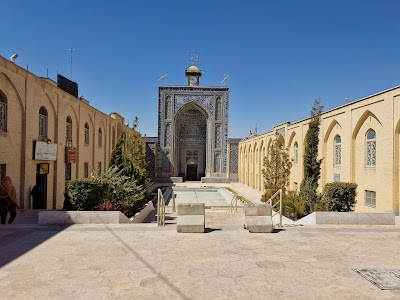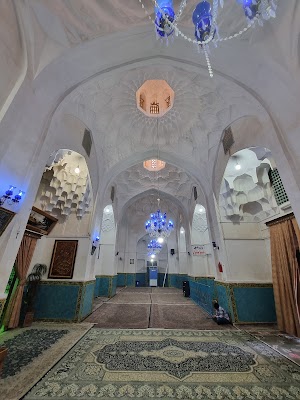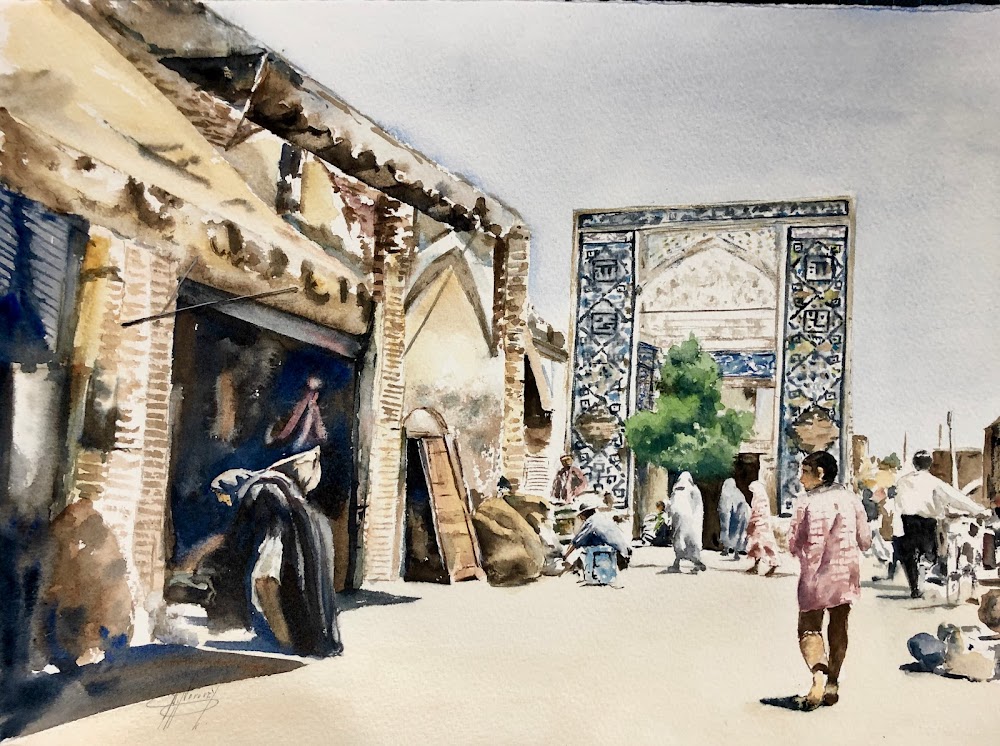Jameh Mosque of Kerman (مسجد جامع کرمان)
Overview
The Jameh Mosque of Kerman, also known as the Friday Mosque of Kerman, is a stunning historical and architectural treasure nestled in the heart of Kerman, Iran. Dating back to the 14th century, this mosque serves not only as an active place of worship but also as a significant cultural and historical landmark that draws visitors from across the globe.
Constructed in 1349 during the reign of the Muzaffarid dynasty, the mosque was commissioned by Amir Mobarezeddin Mohammad-e-Mozaffari to act as the main congregational mosque for Kerman. This period was marked by a flourishing of culture, and the Jameh Mosque stands as a testament to the artistic and architectural advancements of that era.
One of the mosque's most striking features is its grand iwan, the monumental arched gateway leading into the prayer hall. Adorned with intricate tilework and calligraphy, this iwan reflects the rich Islamic art traditions of the 14th century. The vibrant blue tiles and detailed arabesque patterns are particularly noteworthy, having been remarkably well-preserved, showcasing the exceptional craftsmanship of the artisans who constructed the mosque.
The courtyard of the mosque is another highlight, featuring a spacious and beautifully symmetrical layout typical of Persian mosques. A central fountain, used for ablutions before prayer, enhances the serene ambiance, providing visitors with a tranquil space to reflect and appreciate the historical significance of their surroundings.
Inside, the prayer hall impresses with robust columns and a beautifully decorated dome. This dome, a marvel of Persian architecture, is adorned with intricate tilework and geometric designs that evoke celestial themes common in Islamic art. The mihrab, the niche indicating the direction of Mecca, is exquisitely decorated with Quranic inscriptions and stunning tile patterns, further enriching the interior's beauty.
Historically, the Jameh Mosque of Kerman has witnessed numerous events and transformations. It has served not only as a place of worship but also as a community center for various social and cultural activities. Over the centuries, the mosque has undergone several renovations, particularly during the Safavid and Qajar dynasties, each adding to its present form while preserving the core elements of the original structure.
An intriguing feature of the mosque is its ancient sundial, located in the courtyard. This sundial was historically used to determine prayer times based on the sun's position, showcasing the ingenuity of early architects and their understanding of astronomy.
Visitors to the Jameh Mosque of Kerman can also explore the nearby Ganjali Khan Complex, which includes a bazaar, bathhouse, and caravanserai. Built in the 17th century under the Safavid ruler Ganjali Khan, this complex adds another layer of historical and architectural interest to the area surrounding the mosque.
For tourists, a visit to the Jameh Mosque of Kerman offers a unique opportunity to delve into Iran's rich cultural and religious history. The mosque's blend of historical significance, architectural splendor, and serene atmosphere makes it a must-visit destination. Friendly local guides and informative plaques enhance the experience, providing valuable insights into the mosque's past and its role in the community.
In summary, the Jameh Mosque of Kerman is more than just a place of worship; it embodies the rich cultural heritage of Iran. By exploring its architectural marvels, learning about its historical context, and experiencing the tranquility of its courtyard, visitors can gain a deeper appreciation for the remarkable achievements of Persian architecture and the enduring legacy of Islamic art. Whether you are an architecture enthusiast, a history buff, or a curious traveler, the Jameh Mosque of Kerman is sure to leave a lasting impression.






